How to deal with nematodes
Related Articles
Nematodes get a bad press in the turf world. However, the majority are fantastic creatures and are integral to healthy soil and plants. Yes, we have some issues with the root-feeding parasite type of nematode, but they are the minority (or should be the minority) in our soil and most nematodes are indeed very beneficial. There is an incredible variety of nematodes and all have different functions and benefits.
Until the arrival of Redox TurfRx NatureCur, addressing the issues caused by root-feeding nematodes had been very difficult and somewhat of a costly lottery. Trying to discriminate between the good, the bad and the very good nematodes was impossible; in many cases the chemical control of nematodes made the situation even worse.
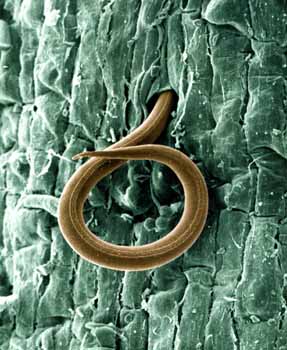
A juvenile root-knot nematode, Meloidogyne incognita, penetrates a tomato root. Once inside, the juvenile, which also attacks cotton roots, causes a gall to form and robs the plant of nutrients. Photo by William Wergin and Richard Sayre. Colorized by Stephen Ausmus.
Types of nematode
All species on the planet require just two things to function; a habitat and a food source. This is so important when we look at a functioning soil food web, biological balance and healthy soil and plants. The type of nematode in our soils is simply categorised by the food they eat.
- Fungal-feeding – live in the soil and feed on fungi, they have a very small mouth (stylet) that simply pierces the fungal hyphae and sucks out the goodness.
- Bacterial-feeding – grazers of bacteria, consuming bacteria similar to how a blue whale feeds on krill. Their mouth is a hollow tube that simply ingests bacteria.
- Root-feeding – plant parasites feeding on the root system by extracting sugars and other goodies from the plant. There are two types; endo (live and feed inside the plant) and ecto (feed from the outside of the plant), both have a tiny stylet that pierces plant tissue in order to extract the sugary goodness the plant has.
- Predatory nematodes – eat all types of nematode. They are larger in size and will eat the other nematodes whole, especially the sweet root-feeders.
Nematodes are integral to the soil food web. The plant feeds soil bacteria by emitting exudates through its roots and into the rhizosphere. It will feed the fungi with the complex carbon compounds that it produces as a result of photosynthesis. As we know, some nematodes eat bacteria and fungi, these micro-organisms contain more nutrients than the nematodes require. This excess nutrient is then released back into the soil in an available form for plants and other soil dwelling species to use.
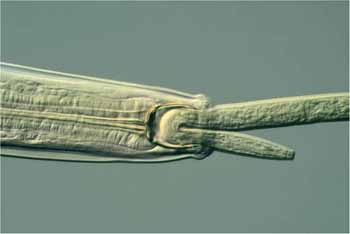
Controlling and keeping a balanced ecosystem
Predatory nematodes are key in controlling the root-feeding nematode numbers. They will live happily in the soil when the bacterial- and fungal-feeding nematode numbers are high. The predatory nematodes control the numbers of all species, however, they particularly like the sweet taste of root-feeders. Root-feeders spend a lot of the time protected inside the root and the predatory nematodes keep the fungal and bacterial feeders under control until the opportunity for snacking on the sweet root-feeder appears.
Let’s look at the situations where problematic nematodes are most prevalent: football stadia, new builds and sand construction areas. We see massive numbers of root-feeding nematodes on relatively new sandy soils where the soil lacks bacteria and fungi. These environments therefore lack in bacteria and fungi feeding nematodes. This results in very low numbers (if any) of predatory nematodes which in turn leaves the root-feeding nematode free from predators and able to enjoy an abundance of food in the perfect habitat.
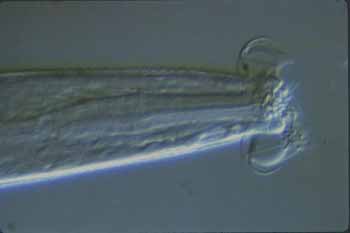
Trying to control nematodes with different lotions and potions can actually have an adverse effect. Products that kill nematodes cannot discriminate between a beneficial predator or fungal feeder and an unwanted root-feeder. As we know, the root-feeder spends a large part of its time protected inside the root, so in essence, using products to control soil dwelling nematodes can actually make the situation worse, producing less predators, less ‘beneficials’ and a happier environment for the unwanted root-feeder.
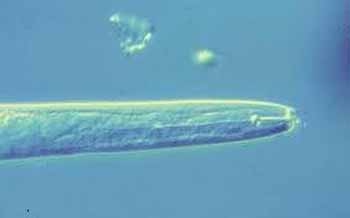
How can TurfRx NatureCur help?
Redox developed a unique product in Turf Rx NatureCur. This formulation delivers specific botanical extracts to the grass roots that results in them becoming less palatable to the parasitic root-feeding nematode. The unique combination of NaturCur’s ingredients, derived through a patented process have proven to be a powerful root growth solution, that enhances the plant’s root development and metabolism to deal with pest pressure coming from the parasitic nematode.
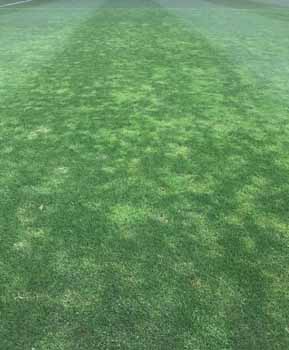
NatureCur is derived from two natural carbon sources found in nature. It can be used anytime, anywhere, on any plant, but particularly to reduce nematode pressure that reduces plant health and quality. With stronger roots, the plant is more capable of nutrient uptake and NatureCur will enhance the plant’s ability to metabolise nutrients.
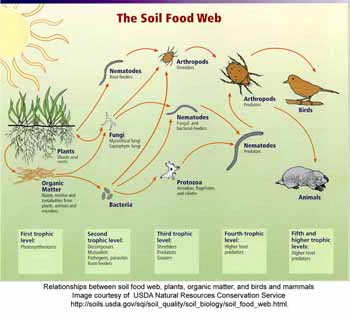
For more information, visit eu.aquatrols.com/naturecur

























